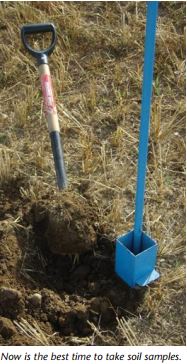



Farmers Told to Begin October Soil Sampling
October is a good time to sample soils and address nutrient deficiencies to maximise grass production, advise Irish researchers.Only one in 10 grassland soil samples analysed between 2007 and 2013 had the optimum balance of the major soil nutrients to maximise grass production, writes the Irish Agriculture Food and Development Authority (Teagasc).
The figure appeared in Teagasc's Soil Database, said researchers, adding that analysis is the most cost-effective tool to optimise fertiliser and manure applications.
An up-todate soil test report will provide a sound footing to tailor fertiliser requirements on a field-by-field basis and ensures maximum potential return from the spend on fertilisers.
Now is the best time to take soil samples and plan lime/fertiliser/manure programmes for 2015. For grassland soils, request an S1 test to check the soil’s lime status, and phosphorus (P) and potassium (K) levels.
How to Start
Make sure that fields are sampled correctly and take note of the following:
- For sampling purposes divide the farm into fields or areas of between 2 and 4ha
- Take separate samples from areas that differ in soil type, previous cropping history, slope, drainage or persistent poor yields
- Avoid any unusual spots such as old fences, ditches, etc
- Do not sample a field for P and K until three to six months after the last application of fertiliser P and K (now is a good time to soil sample).
Where lime has been applied, allow a time lag of two years before sampling for lime requirements; and, follow a ‘W’ soil sampling pattern to ensure that the sample is representative of the entire field. Ensure that all soil cores are taken to the full 10cm depth.




